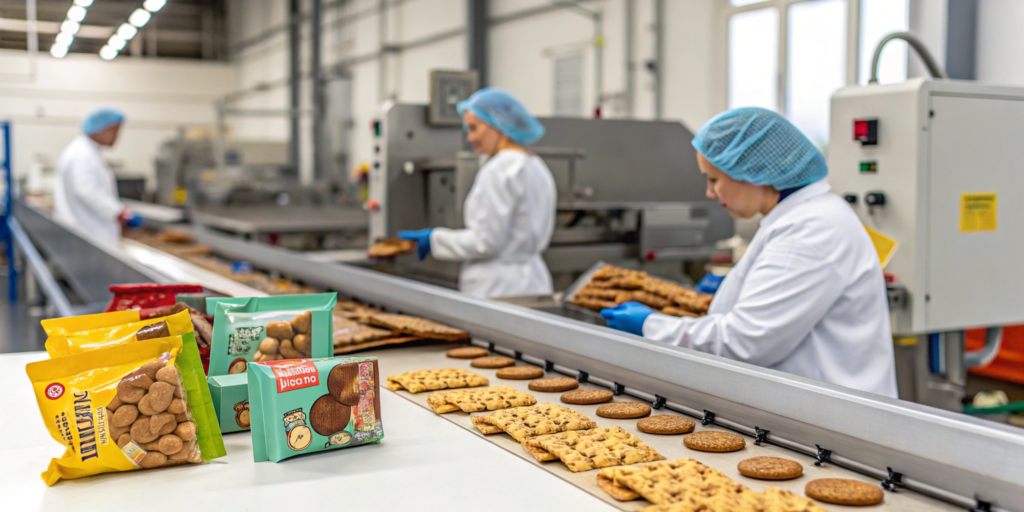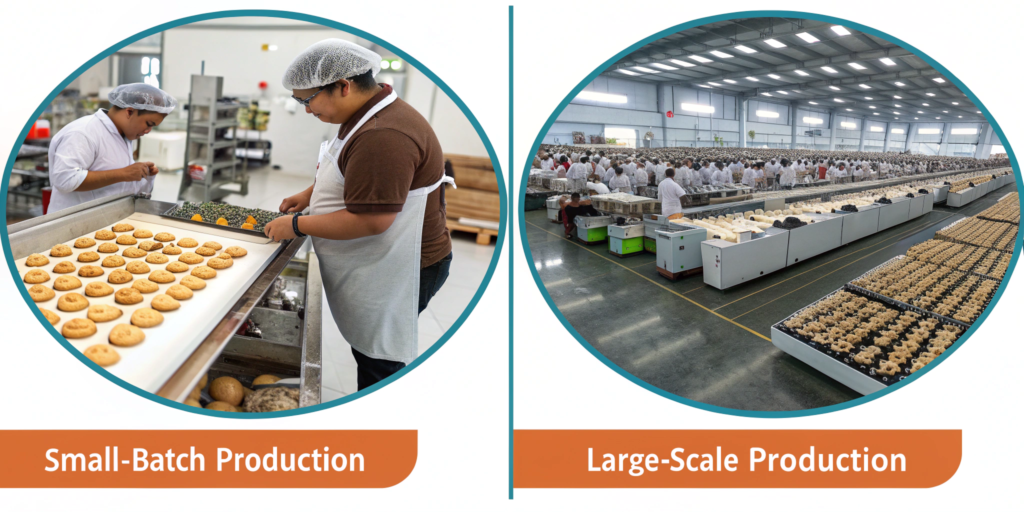Starting a new brand means staying flexible. Small-batch production allows you to do this by avoiding the need for large production runs right away. It lets you experiment, make changes, and test products before going big.
Small-batch production allows you to experiment with new ideas, adjust based on feedback and trends, and minimize financial risk.

Freedom to Test New Ideas
For new brands, flexibility during the early stages is crucial. Small-batch production1 allows me to try out new products in small quantities, which means I don’t have to take a huge risk. I can test different flavors2 or packaging designs3 to see what works best. If something doesn’t work out, I can make changes quickly without having to deal with unsold inventory. This flexibility helps businesses stay responsive to market needs4.
Faster Adjustments
Another great thing about small-batch production is that it’s quicker than large-scale manufacturing. When I first launched my cannabis snack line, I didn’t want to wait months to see how a product performed. Small-batch production allowed me to get products to market faster and make quick changes if something didn’t meet customer expectations. This was particularly helpful for staying ahead of competitors and quickly responding to customer feedback.
In the fast-paced world of new businesses, being able to adapt quickly is essential. Small-batch production allows brands to stay flexible and test products in a controlled way. It lets you learn and adjust without the pressure of mass production.
What Financial Advantages Does Small-batch Production Offer Compared to Large-scale Manufacturing?
Starting a new brand can be expensive. The financial benefits of small-batch production are one reason it’s a great option for new businesses. It reduces the need for large investments and minimizes risk.
With small-batch production, I don’t have to spend large amounts of money upfront. Instead of paying for huge production runs, I can focus on smaller batches, which reduces financial stress and improves cash flow5.

Lower Upfront Costs
The biggest financial advantage of small-batch production is that it requires less upfront investment. I don’t need to buy a huge amount of raw materials or products in bulk. This is especially important when cash flow5 is tight, as is often the case when running a new business. By producing smaller quantities, I can better manage my budget and avoid taking on debt or relying on expensive loans.
Better Cash Flow Management
Another financial advantage is that small-batch production helps me maintain better cash flow5. I can produce products based on actual demand, avoiding overproduction. This means I don’t have to worry about unsold inventory sitting around, tying up money. For example, when I started selling cannabis snacks, I didn’t want to produce too many in case they didn’t sell well. Small-batch production allowed me to create just enough and keep inventory costs low.
Cash Flow Management Chart
| Cost Type | Small-Batch Production | Large-Scale Production |
|---|---|---|
| Upfront investment | Lower | High |
| Risk of unsold inventory | Low | High |
| Flexibility in quantity | High | Low |
In short, small-batch production helps businesses like mine keep costs down and avoid financial risk. It makes it easier to control expenses and stay within budget.
How Can Small-batch Production Help New Brands Test Market Demand Before Scaling Up?
Testing the market is one of the first steps in growing a new brand. Small-batch production is a great way to do this. It lets new businesses test products on a small scale before deciding whether to invest in larger runs.
By producing smaller quantities, I can see how customers respond to a product. This helps me gauge demand and make adjustments before scaling up.

Testing Products with Real Customers
Small-batch production allows me to launch products in smaller quantities and see how they perform in the market. This way, I can test demand without the risk of producing too much. When I first introduced a new snack flavor, I didn’t know if it would sell well. By starting small, I could test the flavor and adjust it based on customer feedback before committing to larger orders.
Responding to Customer Feedback
The great thing about small-batch production is that it gives me the ability to respond quickly to customer feedback. If a product isn’t working, I can make changes quickly. For example, if customers find a particular flavor too sweet or the packaging not attractive enough, I can make changes without worrying about losing a large investment in unsold inventory.
Small-batch production also allows me to test new products or limited-edition items that create excitement and urgency among customers. This can build brand loyalty and help attract new buyers. By testing the waters with small runs, I’m able to refine my products and adjust my strategy before scaling up to larger volumes.
Market Testing Comparison
| Feature | Small-Batch Production | Large-Scale Production |
|---|---|---|
| Customer feedback loop | Fast | Slow |
| Risk of wasted inventory | Low | High |
| Opportunity to refine products | High | Low |
Conclusion
Small-batch production has been a game changer for me as a new business owner. It allows me to stay flexible, reduce financial risks, and test products in the market before scaling up. It’s a smart approach for startups looking to grow without committing to large investments.
-
Understand the advantages of using small-batch production in new brand development. ↩
-
Learn how flavors affect snack product marketability and consumer satisfaction. ↩
-
Discover effective packaging design strategies for food product success. ↩
-
Explore how market demand drives the design and launch of new products. ↩
-
Learn how effective cash flow management can benefit startups and small businesses. ↩ ↩ ↩

